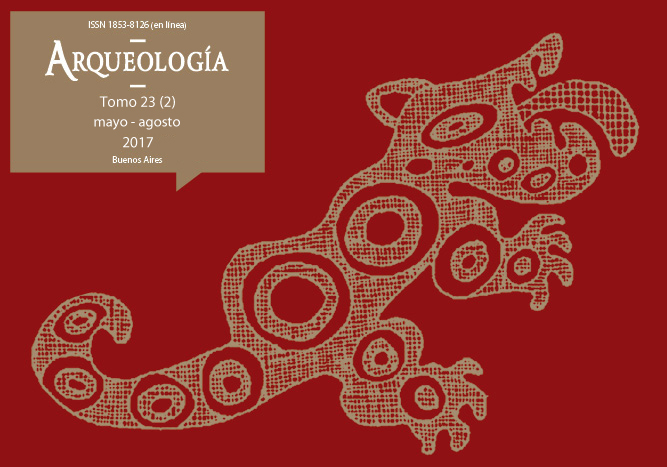Ceramic assemblages in interaction contexts. A diachronic analysis of pottery from the Los Viscos site (Valle del Bolsón, Belén, Catamarca)
Keywords:
Ceramic production, Interregional interaction, Petrography, Style, Diachronic
Abstract
In this article, we present the results obtained from the stylistic analysis, as well as the technological and petrographic study of ceramic recovered from the Los Viscos site, El Bolsón Valley (Belén, Catamarca). The site is a rock-shelter which was occupied discontinuously, yet recurrently between c. 1,000 BC – AD 1,600. The site functioned as a temporary shelter associated to interregional mobility. The ceramics recovered from the various occupation layers’ date to the Formative, Regional Development and Indo-Hispanic period. We undertook, a synchronous and diachronic analysis of the material with the aim of contributing to the study of valley’s ceramic production practices, thereby generating data linking the site with other regions. In this manner, the ceramic provenance was discussed, suggesting that there was diferential movement at play between fine and common ceramics throughout the chronological sequence.Downloads
Download data is not yet available.
How to Cite
Puente, V. (1). Ceramic assemblages in interaction contexts. A diachronic analysis of pottery from the Los Viscos site (Valle del Bolsón, Belén, Catamarca). Arqueología, 23(2), 11-33. https://doi.org/10.34096/arqueologia.t23.n2.3776
Section
Articles
Authors who publish in this journal agree to the following conditions:
- Authors retain copyright and yield to the journal right of first publication with the work registered with attribution license Creative Commons, which allows third parties to use the published always mentioning the authorship of the work and first publication in this magazine.
- Authors can make other independent and additional contractual arrangements for the non-exclusive distribution of the version of the article published in this issue (p. Eg., Inclusion in an institutional repository or publish it in a book), provided that clearly indicate that the work was published for the first time in this magazine.
- It allows and encourages the author / s to publish their work online (eg institutional or personal pages) before and during the process of revision and publication, as it can lead to productive exchanges and greater and more rapid dissemination of work published (See The Effect of Open Access).





(1)13.png)






1.jpg)
1.jpg)


13.png)
1.png)


(1)1.png)









